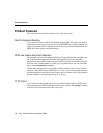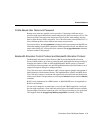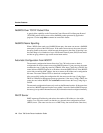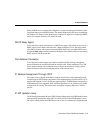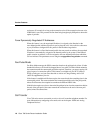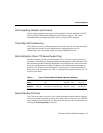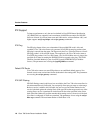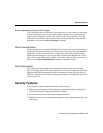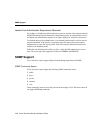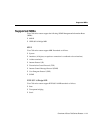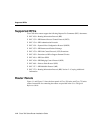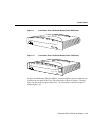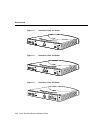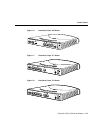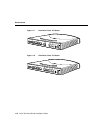
Overview of Cisco 700 Series Routers 1-5
Product Features
When a DHCP server is enabled and configured, it assigns and manages IP addresses from
a specified addresspool to DHCPclients. The options supportedby this serverare sufficient
for Windows 95 clients. If more IP addresses or options are required, a commercial DHCP
server (for example, Windows NT) should be used.
DHCP Relay Agent
Cisco 700 series routers can function as a DHCP relay agent. (The router can also act as a
DHCP server, but not both at the same time.) When configured, Cisco 700 series routers
relay DHCP requests and responses between DHCP clients and a specified DHCP server.
Use the set dhcp relay command, wherethe IP address is the address ofthe server to which
DHCP requests will be forwarded.
Port Address Translation
Cisco 700 series routers support port address translation (PAT) allowing a designated
private IP network to communicate with the outside world. When configured, Cisco 700
series routers translate source addresses from an IP private network to a single, global,
unique IP address before forwarding the packets to the outside world.
IP Address Assignment Through IPCP
The router can be assigned an IP address from the remote device using Internet Protocol
Control Protocol (IPCP) address negotiation. The implementation is based on RFC1332. It
supports IPCP options1 and 3. (Itdoes not support option2, TCP/IP Header Compression.)
IP unnumbered is also supported. IPCP address negotiation is on by default in any profile
configured for IP routing. This feature does not support assigning addresses to remote
devices.
IP RIP Update Linkup
The IP Routing Information Protocol (RIP) Update Linkup option for IP RIP enables better
interoperability between the router and Cisco IOS software. If the IP RIP update is set to
link up for a WAN profile, the IP RIP data is sent as soon as a connection is established and




